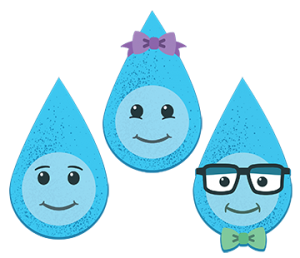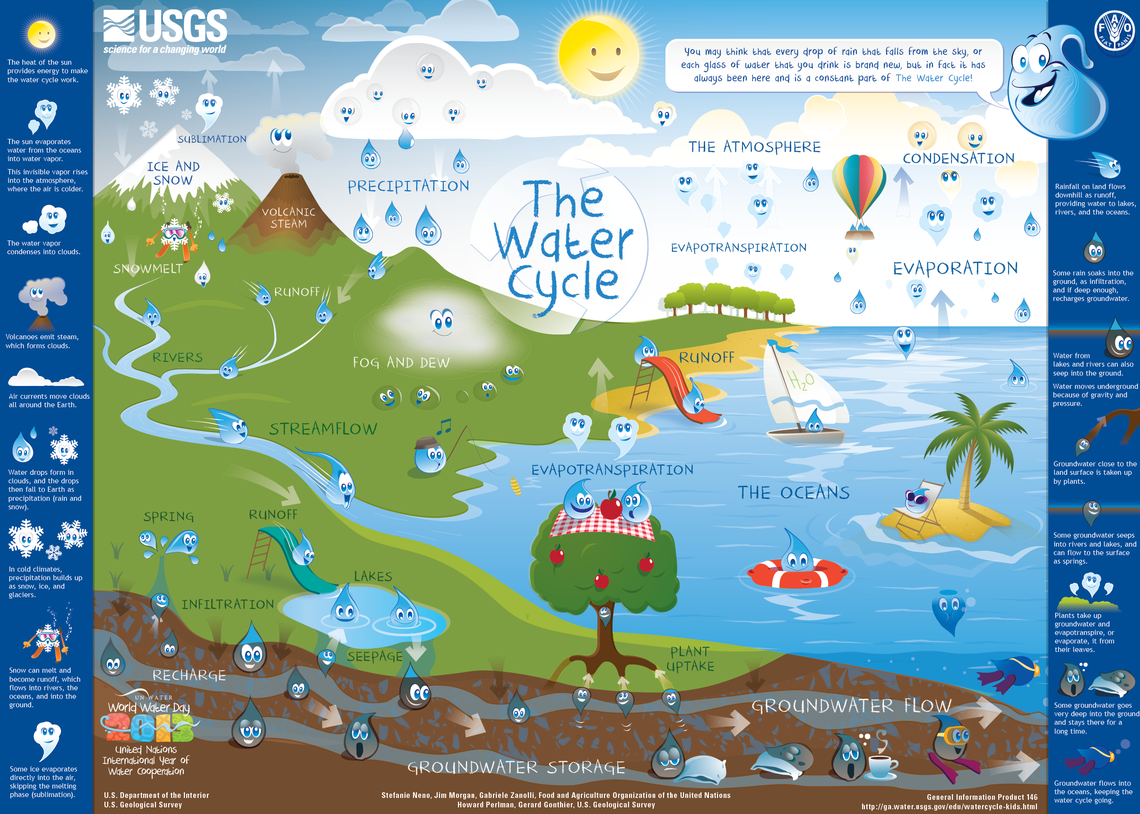What is the water cycle?

Water Drops: Trickle, Droplette and Professor Dew
The water cycle describes the existence and movement of water on, in, and above the Earth. Earth’s water is always in movement and is constantly changing states, from liquid to vapor to ice and back again.
The water cycle has been working for billions of years and all life on Earth depends on it continuing to work. Dinosaurs once drank the same water we drink today, which is pretty neat to think about. We are not ever creating “new” water so that is what makes it so important that we take care of the water we have!
These interactive water cycle diagrams from USGS allow you to “mouse around” the parts of the water cycle and view explanations, pictures, and more. Click the links below for the interactive water cycle diagrams:
- The Water Cycle for Schools: Beginner
- The Water Cycle for Schools: Intermediate
- The Water Cycle for Schools: Advanced

A summary of the water cycle
You may think that every drop of rain that falls from the sky, or each glass of water that you drink, is brand new, but it has always been here and is a part of the water cycle.
- The heat of the sun provides energy to make the water cycle work.
- The sun evaporates water from the oceans into water vapor.
- This invisible vapor rises into the atmosphere, where the air is colder.
- The colder air causes water vapor to condense into water droplets and clouds.
- Volcanoes can produce steam, which forms clouds.
- In tha atmosphere, air currents move clouds all around the Earth.
- Water drops form in clouds, which then fall to Earth as precipitation (rain and snow).
- In cold climates, precipitation builds up as snow, ice, and glaciers.
- Snow can melt, becoming runoff, which flows into rivers, the oceans, and into the ground.
- Some ice evaporates directly into the air, skipping the melting phase (sublimation).
- Rainfall on land flows downhill as runoff, providing water to lakes, rivers, and the oceans.
- Some rain soaks into the ground, as infiltration, and, if deep enough, becomes groundwater.
- Water from lakes and rivers can seep into the ground.
- Water moves underground because of gravity and pressure.
- Groundwater close to the land surface is taken up by plants.
- Some groundwater seeps into rivers and lakes, and can flow to the surface as springs.
- Plants take up groundwater and evapotranspire, or evaporate, it from their leaves.
- Some groundwater goes very deep into the ground and stays there for a long time.
- Groundwater flows into the oceans, keeping the water cycle going.
